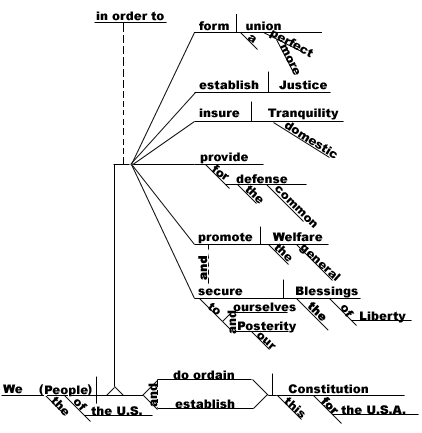How do you diagram Spanish sentences?
Is there a guide for diagramming sentences in Spanish?
5 Answers
I don't understand why it would be any different than diagramming sentences in English other that the words may not be in the SVO order.
Q: Does anyone know of a good method of diagramming sentences in Spanish? I have seen so many sentece diagramming styles in English, but never any in Spanish. Has anyone ever learned a good diagramming method for Spanish sentences? Do you know of a diagramming system that would work well for Spanish...... (1 answer - asked 42 months ago)
A: Use a tree diagram
Tree diagrams, which are a representation of x-bar theory, can be used to diagram sentence structure and syntax in nearly any language. The basic concept involves taking the sentence and breaking it down into its component phrases. Then breaking these phrases down into smaller units using a tree structure until each word has been classified. Hopefully the example provided in the link clearly demonstrates the concept. If it does not, try searching for "tree diagram" along with "grammar" for english resources and terms combined with "sintaxis" for spanish syntax resources.

There would be no appreciable difference. In Spanish (as in English) verbs have subjects (and, perhaps, direct and indirect objects). Adjectives and articles modify nouns. Adverbs modify verbs, adjectives and other adverbs. Prepositional phrases can serve as adjectives or adverbs. The basic syntactic relationships are all the same.
The things that most trouble (English speaking) learners of Spanish e.g. ser/estar, por/para, indicative/subjunctive and imperfect/preterit are, in no way illustrated/made clearer by diagrams (because, syntactically they are the same, what differs is their usage). As a simple exercise, one could certainly diagram Spanish sentences (just as one does English sentences) but it provides no additional insight into Spanish as a language.
For those who have trouble understanding/visualizing syntactic relationships, it might be helpful but, then, their problem is not (especially Spanish grammar) but one of understanding grammatical relationships, in general. In such cases, presenting them with the dual problem of learning to diagram sentences and to do so in a foreign language is an unnecessary (and probably counter-productive) complication.
Aside from the obvious issues of inflected verbs, nouns and adjectives and nouns with grammatical gender (for which a diagram provides no additional insight), the syntax of English and Spanish (and the rest of the Romance languages) is remarkably similar.
P.S. The answer to "How does one diagram Spanish sentences?" is "The same way one diagrams English sentences."
I used the model of diagramming for English sentences with my high school Spanish 3 class. They found it valuable in several cases, for example verbs such as gustar which seem "backwards" to a Spanish learner. It also helped clarify direct and indirect object vs subject. My students do have deficits in English grammar, but many of them were fascinated by diagramming. They also said it seemed easier in Spanish than English. They plan to use this as a tool to make sure their translations are complete and for checking noun/adjective and subject/verb agreement.
Hola vecino:
As was alluded to by Qfreed, proponents of transormational-generative grammar contend that you can use tree diagrams to diagram sentences in pretty much any language and that most of the sentence trees for the worlds languages can be generated by following a set of three simple rules related to generative grammar:
1). Specifier rule:
2). Adjunct rule:
3). Complement rule:
If you pick up a book on generative grammar, this topic is usually covered in a span of about 50 to 100 pages. There are also sites available on the web which describe this topic in detail, just do a search of "X-bar theory" and "generative grammar" and you should be able to come up with something. Trying to explain the entire concept would likely not be feasible in this format. Here is a simple example in Spanish:
S
/\
/ \
/ \
/ \
/ \
SN V'
/\ /\
/ \ / \
/ \ / \
Det N V SN
| | | /\
| | | / \
| | | Det N
| | | | |
| | | | |
| | | | |
[La] [niña] [leía] [el] [periódico]
If you are simply looking for additional examples here are a couple of useful links that provides several instances of tree diagrams of Spanish sentences as well as explanations (however, the text is in Spanish)
Diagramming... as in the way is done in syntax books?














